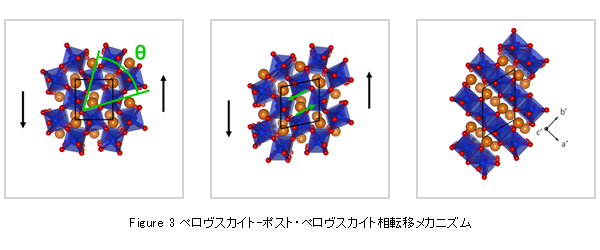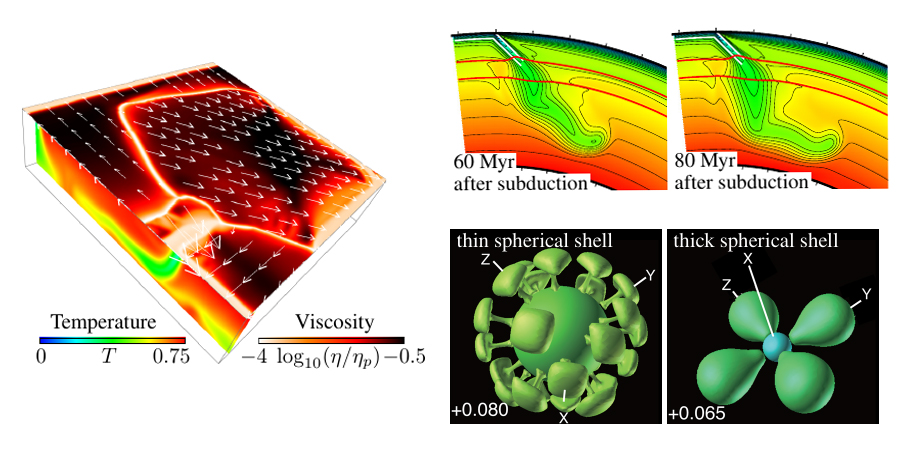Theoretical mineral physics
The theoretical mineral physics group (TMPG) investigates ultrahigh-pressure behaviors of Earth and planetary materials theoretically and computationally by means of the ab initio quantum mechanical computation method based on the density functional theory. It is now possible to predict several key physical properties of Earth and planetary materials under high-pressure quantitatively with uncertainties that are comparable to or even less than those found in experimental data: high-P,T phase transition and high-pressure crystal structure, high-P,T thermodynamic property including equation of state, elastic constant tensor, deformation property, thermal transport property, and electronic property. The technique is now one of the most promising in order to tightly constrain the thermochemical conditions of the deep Earth. Due to the outstanding outcomes from the TMPG related to discovery of the post-perovskite phase, spin transition, discovery of the highest-pressure phases of SiO2, and hydrous silicate, the lower mantle mineralogy, thermal property in the core-mantle boundary region, etc., the TMPG has received several honors such as the Thomson-Reuters New Hot Paper, the Ministry of Education, Culture, Sports, Science and Technology (MEXT) award, the JSPS prize, and the Japan Association of Mineralogical Sciences Award.

Numerical Simulation of Mantle Convection
The mantle convection, a dynamic motion of solid rocks in the mantles of terrestrial objects, is well acknowledged as a primary driving mechanism of various geological phenomena that we experience on the Earth’s surface including earthquakes, volcanoes, crustal deformations, continental drift, and plate motions. In addition, the convecting motion in the mantle is one of the most important processes which governs the transfer of heat and mass in the planetary interiors. We are studying the mantle convection by using the computational fluid dynamics (CFD) techniques, aiming at deepening our understanding of the dynamics and evolution of the interiors of Earth and terrestrial planets.
We are investigating the flows occurring in the mantle through numerically solving the fluid dynamical equations that describe the motion of solid rocks.Our particular interests lie in unveiling the peculiarities of the mantle convection coming from various complexities including the “spherical” three-dimensional shapes of planetary interiors and the intensive changes in
the physical properties (such as phase states, rheology, and compressibility) of mantle materials under extreme conditions. We are also developing advanced numerical techniques toward more sophisticated (and more realistic) simulation
studies of mantle convection of various terrestrial objects ranging from small rocky satellites to massive super-Earth exoplanets.

Members
| Name | Position | |
|---|---|---|
| Taku Tsuchiya | Director, Professor | HP CV |
| Masanori Kameyama | Professor | HP CV |
| Haruhiko Dekura | Lecturer | CV |